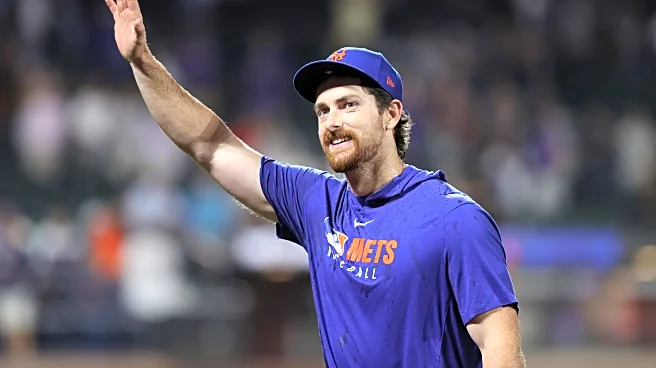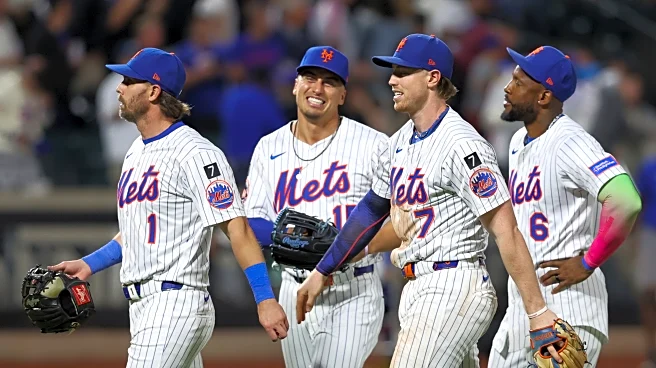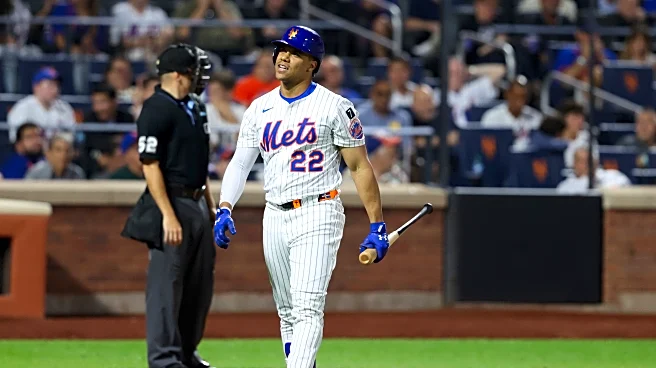What's Happening?
As the MLB season progresses, bold predictions are being made for each division, focusing on key players and their potential impact on the postseason. In the NL East, the New York Mets are expected to make the playoffs, with a 91.67% chance according to DraftKings. Despite injuries to key pitchers like Kodai Senga and Sean Manaea, rookie Nolan McLean has emerged as a potential Game 1 starter for the postseason. McLean has impressed with a strong performance in his first three starts, including an eight-inning game against the Phillies. His pitching line includes 20.1 innings pitched, 10 hits, 2 earned runs, 4 walks, and 21 strikeouts. This development is part of a broader trend where teams are relying on emerging talent to fill gaps left by injured veterans.
Why It's Important?
The emergence of rookies like Nolan McLean in critical roles highlights a shift in team strategies, where younger players are increasingly relied upon during high-stakes games. This can significantly impact team dynamics and postseason outcomes, as fresh talent brings unpredictability and potential for standout performances. For the Mets, McLean's success could be pivotal in overcoming the challenges posed by injuries to their veteran pitchers. This reliance on rookies may also influence future team-building strategies across the league, as teams might prioritize developing young talent to ensure depth and resilience in their rosters.
What's Next?
As the postseason approaches, teams will finalize their rotations and strategies, with the Mets likely considering McLean for a starting role in Game 1. The performance of rookies in the postseason will be closely watched, potentially setting the stage for their future careers. Teams will also assess their injured players' recovery and make decisions on their roles in the postseason. The outcomes of these decisions could influence the playoff dynamics and determine which teams advance further.
Beyond the Headlines
The reliance on rookies in high-pressure situations raises questions about the long-term development and management of young players. Teams must balance the immediate need for performance with the potential risks of overworking inexperienced players. This trend could lead to discussions on player welfare and the sustainability of such strategies in professional sports.












